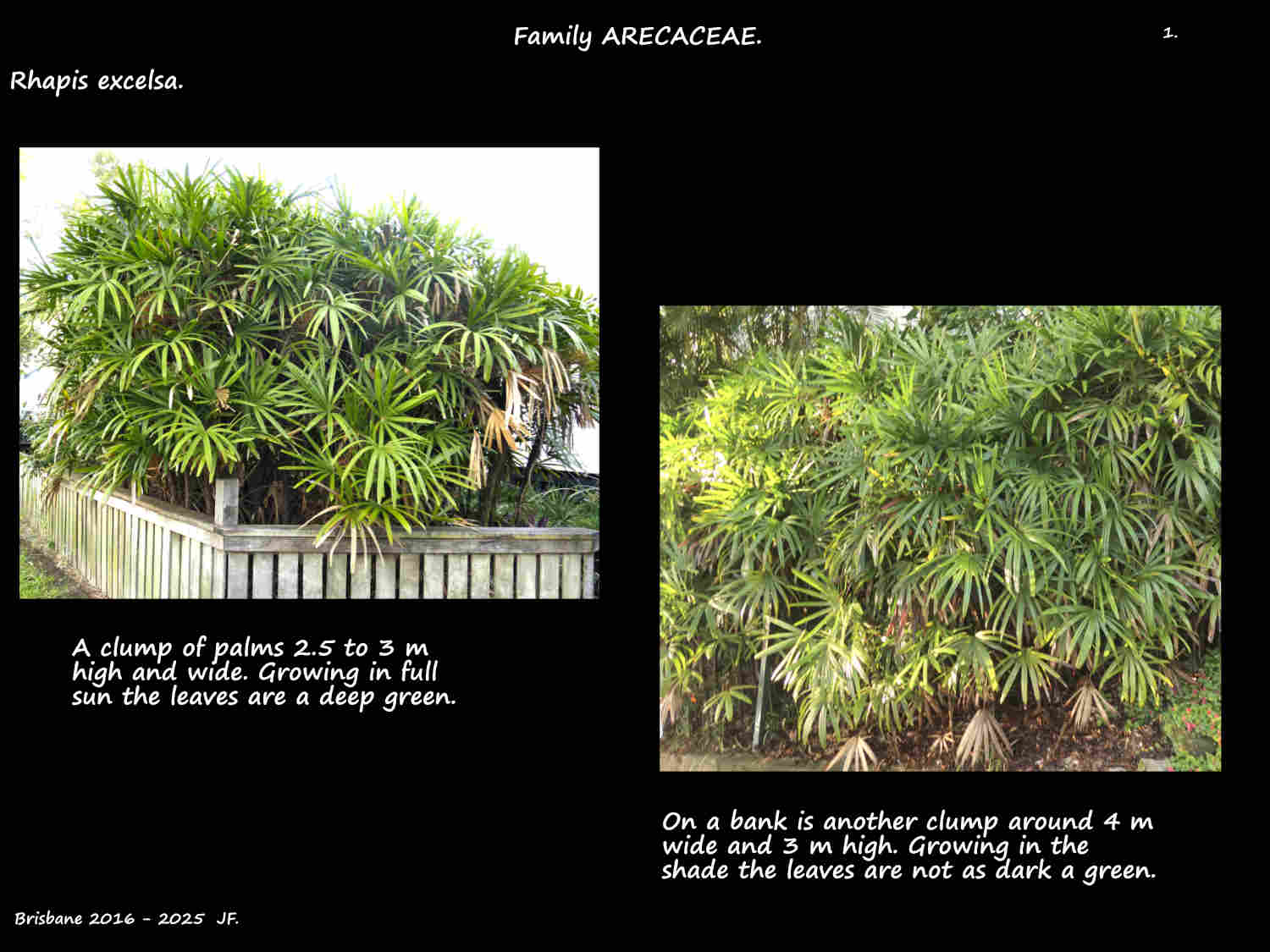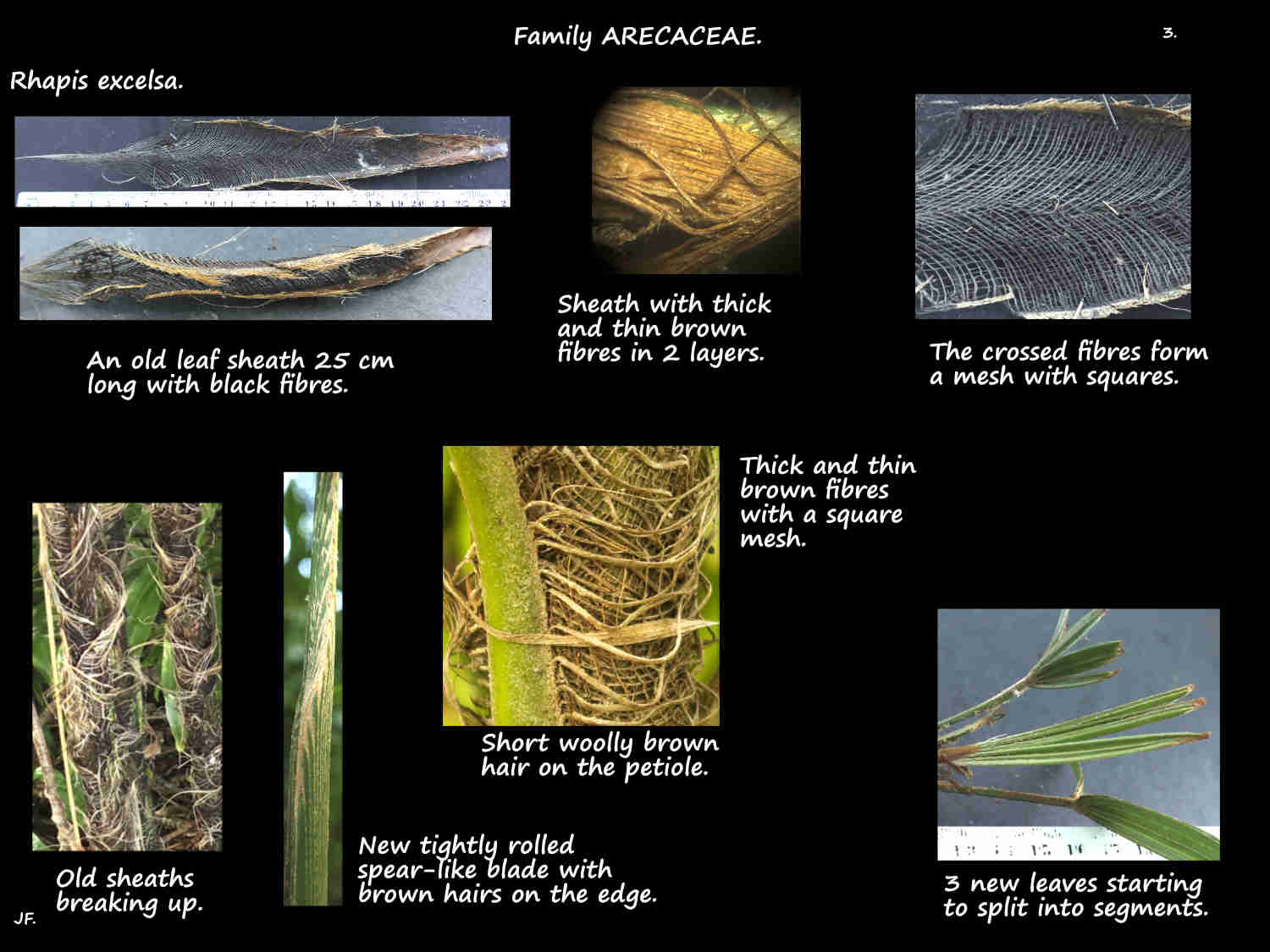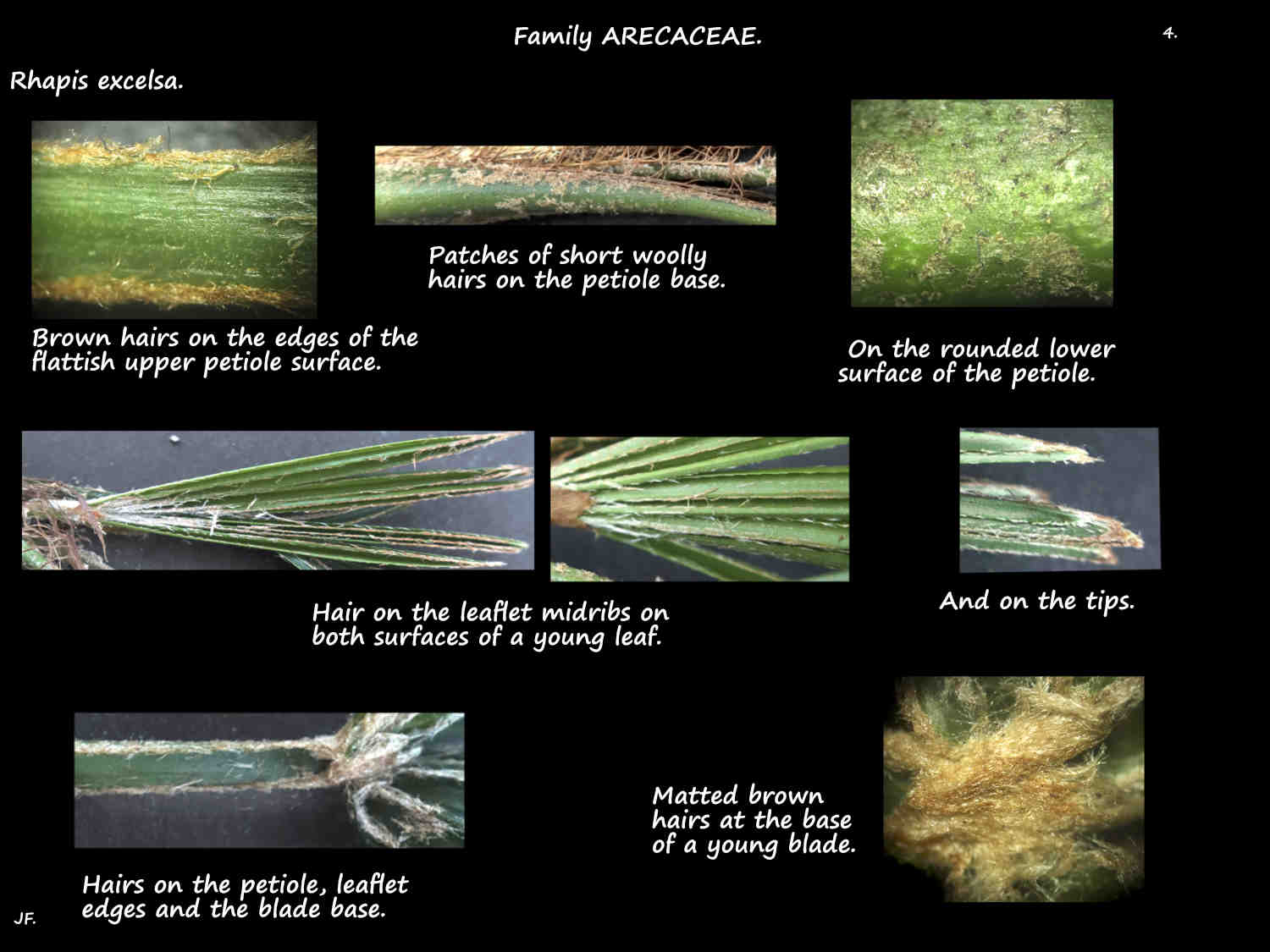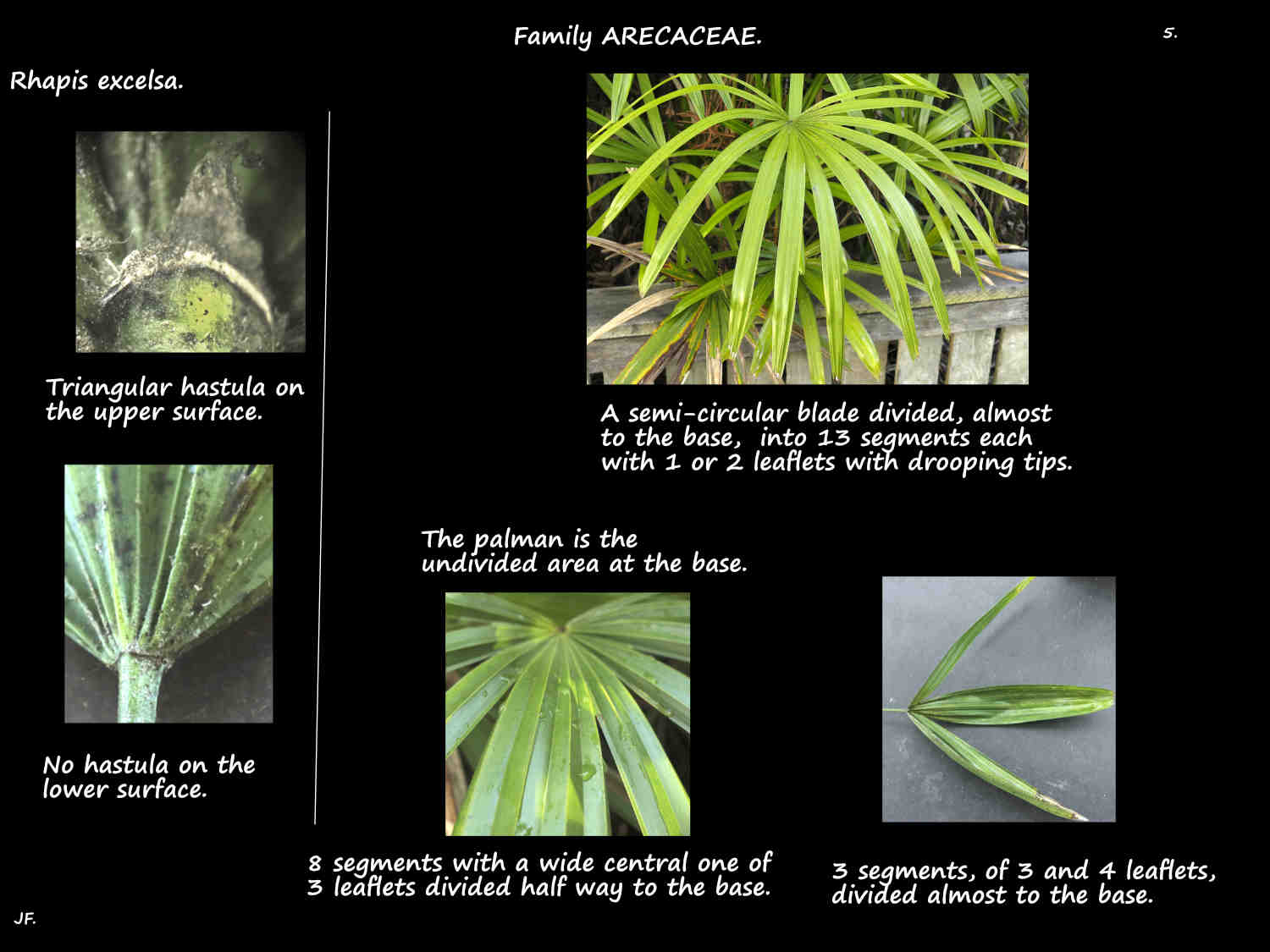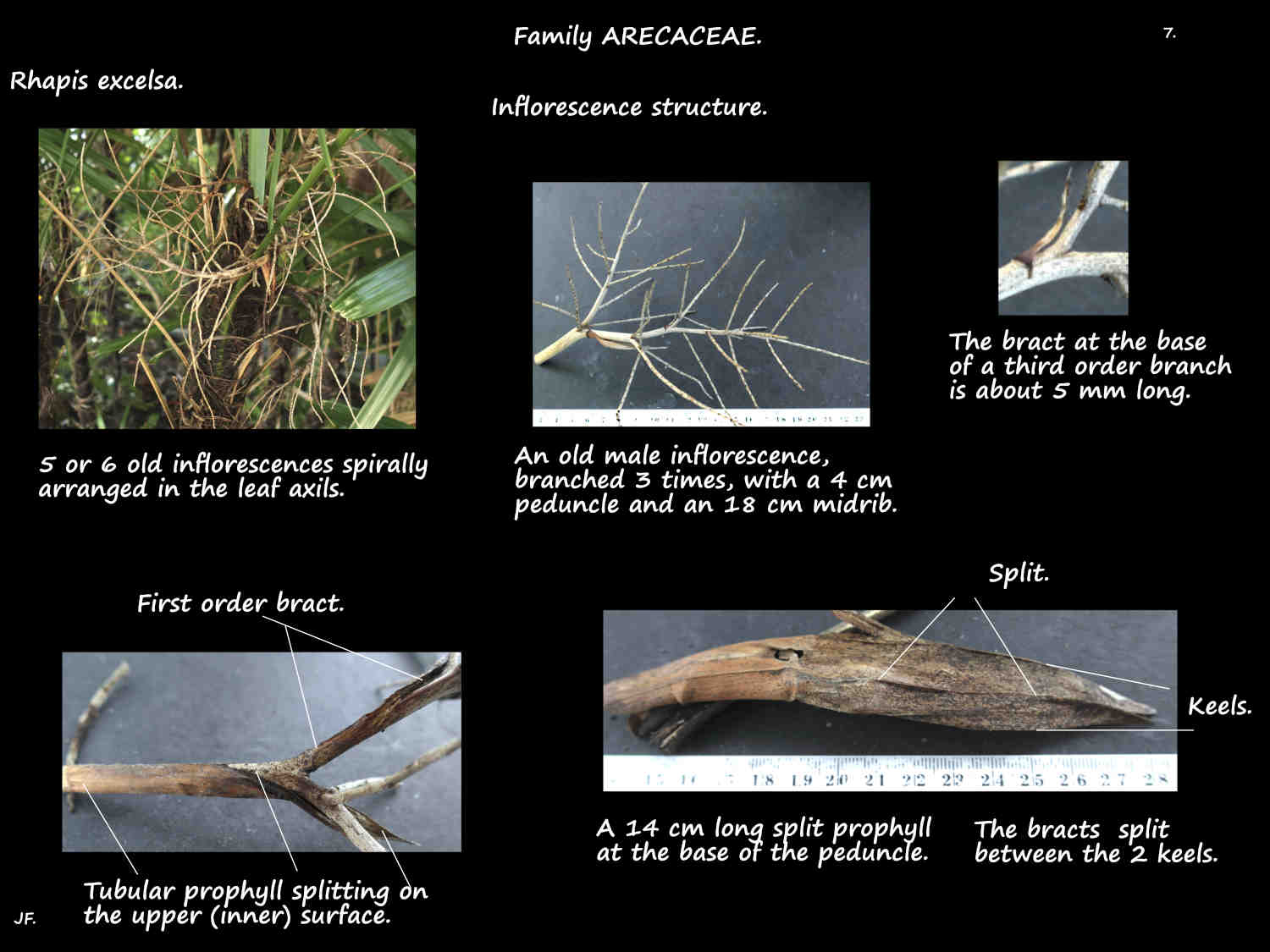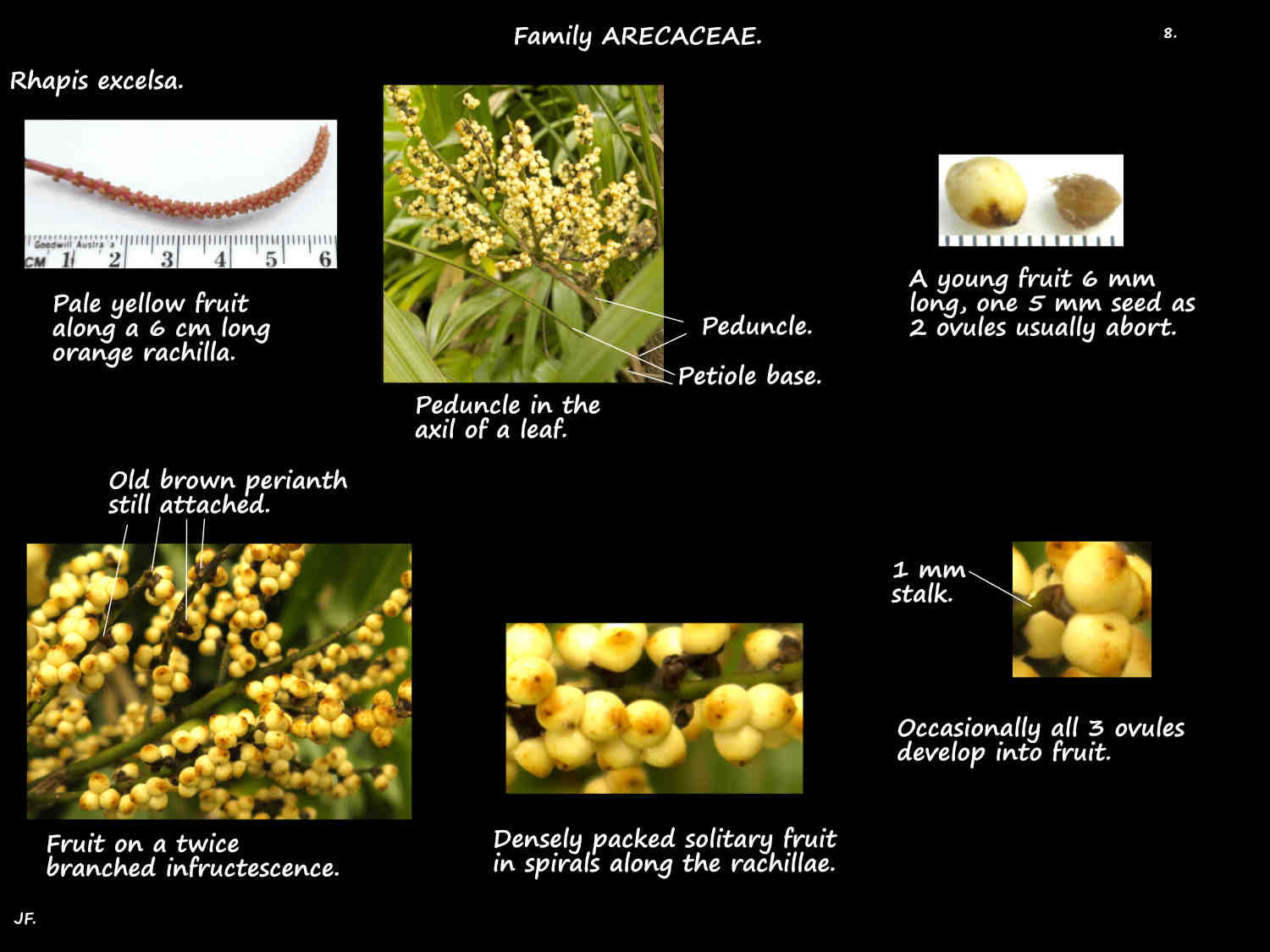The Lady Palm, from China is very common in cultivation.
The suckering palms, growing from rhizomes form clusters.
Thickets can be up to 4 m across.
Stems, up to 3 or 4 m high are around 2 to 3 cms thick (more on old plants).
They are dark green with marked pale often close ring scars.
Most of the stem, and the petiole bases are covered by a fibrous leaf sheath.
Stem and sheath may have short woolly brown hairs when young.
Leaf sheaths have 2 layers of fibres.
The layers cross each other forming a square mesh.
Fibres in the outer layer may be thicker when young.
The leaf sheaths are fairly persistent but eventually they thin then fall.
Alternately arranged leaves are on a petiole up to around 0.5 m long.
The base is covered by the black or blackish-brown leaf sheath.
On the upper surface of the petiole-blade junction is a fibrous hastula (ridge).
The fan or palmate blade is slightly larger than a semi-circle.
The width is variable ranging from 30 to 80 cm.
Blades are divided into around 3 to 13 segments each with 1 to a few leaflets.
Splits between segments or leaflets extend to within 2 to 6 cm from the base.
The undivided basal section is the palman.
The outer segments are narrower often with only 1 leaflet.
Central segments, 5 to 10 cm wide in the middle have a pleated appearance.
The edges of the individual leaflets are folded up (induplicate).
As well as splitting between leaflets the flattish tips also split giving a jagged edge.
The typically dark green leaves may sometimes be a yellow-green.
Leaflets have prominent pale cross veins and fine teeth on the edges.
New blades have dense short woolly hairs especially at the base and tips.
The lower surface has similar hairs along the leaflet midribs.
Short drooping inflorescences, among the leaves are relatively short.
When new they are hidden by the leaf sheaths.
The similar appearing male and female inflorescences are on separate plants.
The tubular prophyll at the base of the peduncle is longer than it.
The prophyll has 2 keels and splits between them.
There are no peduncular bracts but a small one at the base of the branches.
The midrib or rachis is around 25 cm long and the rachillae around 10 cm.
The solitary flowers are densely arranged in a spiral.
Male panicles are branched 3 times.
The 5 mm long fleshy calyx is fused at the base with 3 lobes.
The 3 fleshy yellow petals are also fused at the base.
Tbe 6 stamens are in 2 whorls of slightly different lengths.
There may be a pistillode of 3 aborted carpels.
Female panicles are only branched twice.
The 4 mm female flowers, on a 1 mm stalk have a similar calyx and corolla.
There are 6 very small staminodes.
The ovary, of 3 carpels has 3 locules each with 1 ovule.
The roughly spherical cream to yellow fruit are up to 1 cm long.
They typically have 1 seed but may have 2 or 3.
There are many cultivars including dwarf and variegated forms.
J.F.

